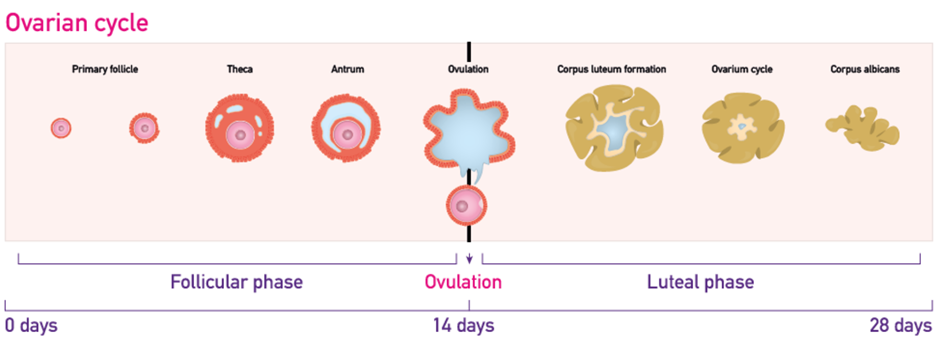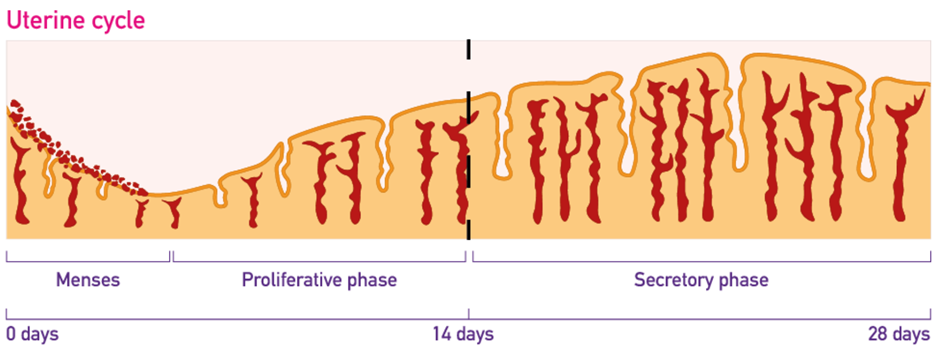LEARNING OBJECTIVES:
To refresh your understanding of the menstrual cycle, so you can confidently help women visiting your pharmacy to make informed choices about their fertility control.
Overview of the menstrual cycle
To understand how hormonal contraception works, it's important to understand the menstrual cycle and the role of the female hormones, including oestrogen and progesterone.
The figures below show the different phases of the normal menstrual cycle, including changes in hormone levels, changes in the ovarian follicle (the ovarian cycle) and changes in the endometrium (uterine cycle). Menstruation itself is considered as the period during which a layer of the endometrium is shed (menses), accompanied by a discharge of blood; typically lasts 3-7 days. Day 1of the menstrual cycle is the first day of menstruation.
The menstrual cycle is controlled by the complex interaction of several hormones.
1. At the start of the cycle, follicle- stimulating hormone (FSH) and luteinising hormone (LH) are produced from the anterior pituitary gland.
2. These hormones act on the ovaries, promoting the development of a small number of follicles and stimulating the release of the hormone oestrogen.
3. Oestrogen stimulates regeneration of the endometrium, thickening the lining of the womb.
4. At about Day 14 oestrogen levels peak, causing a rise in LH levels, which promotes a mature follicle to release an egg from the ovary (ovulation).
5. As soon as ovulation has occurred, the follicle starts producing the hormone progesterone.
6.Progesterone causes:
i) further build-up of the lining of the womb in preparation for the implantation of a fertilised egg; and
ii) changes in the cervical mucus, making it less hospitable to sperm. In addition, progesterone has a negative feedback effect decreasing the release of LH.
7. As the empty follicle shrinks, if the egg is not fertilised, levels of oestrogen and progesterone decrease.
8. Without the high levels of hormones to help maintain it, the thick womb lining that has been built up starts to break down. This is the beginning of the next menstrual cycle.




Contraception can only be effective if it is used correctly and consistently. Consequently, LARCs are one of the effective forms of contraception in terms of prevention of unintended pregnancy, as women do not need to remember to use them, whereas barrier methods are less effective.
Oral hormonal contraceptives such as Lovima 75 microgram film-coated tablets also have the potential to be highly effective, and when used optimally can be 99% effective in preventing unplanned pregnancies.
Counselling tips:
- LARCs are considered the most effective contraceptive because they do not need a women to remember to use them, but they need to be administered or fitted by a doctor or trained nurse.
- When conducting consultation with women considering contraceptive options, ensure the patient is aware of the availability of LARCs.
